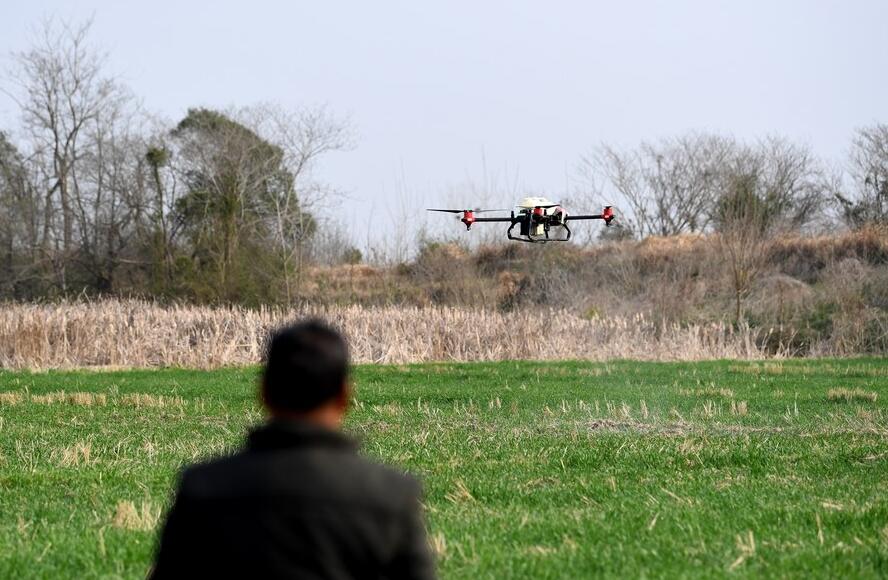Setting the flight speed, relative crop height, and fertilizer doses, Luo Faxin, a 55-year-old farm manager, pressed the button lightly. Five agricultural drones flew swiftly toward the farmlands to spray fertilizer automatically.
A rare scene in the past, this is now a common sight at Luo’s farm in Taolou Township of Changfeng County, east China’s Anhui Province, during the spring farming season.
It used to take 50 people a day to fertilize 67 hectares of land. Today, one person can operate five drones and fertilize 100 hectares of land daily. “Efficiency has increased dozens of times,” Luo said with a smile.
However, intelligent agriculture at the farm goes beyond drones. In 73 hectares of the smart land at the farm, four soil moisture monitors observe soil moisture in real-time. “I can operate the sprinkler remotely with a phone to irrigate any piece of land that needs water,” said Luo.
The “No. 1 central document” for 2023, the first policy statement released by the central authorities each year, outlined nine tasks — from ensuring grain supply and bolstering high-quality rural industries to increasing farmers’ incomes and developing a beautiful countryside.
The document, released on Monday, has underlined efforts to boost the construction of agricultural infrastructure and strengthen support for agricultural science, technology, and equipment to ensure stable production and adequate supply of grain and other agricultural products.
During this spring farming season, the application of improved varieties of crops, advanced agricultural machinery, and new technology brings hope for a bumper harvest. In Changfeng, more farmers have been encouraged by Luo’s success to adopt mechanized farming.
Among the 93,267 hectares of cultivated land in Changfeng, the mechanized cultivation rate of bulk crops has reached 87 percent.
“Through mechanized farming, we can reduce costs and improve efficiency, increasing production and income. In 2022, the per capita disposable income of permanent local rural residents exceeded 27,000 yuan (about 3,960 U.S. dollars), up 7.2 percent year on year,” said Yang Xiaohu, director of Changfeng Agricultural Technology Popularization Center.
Green agriculture is another highlight during the spring farming season in some parts of the country.
“This year, our cooperative has planted more than 733 hectares of rice, and we want to order more bio-organic fertilizer,” said 54-year-old Yu Dianhong, chairman of the Hong Yang Organic Farming Farmers Professional Cooperative, during a phone call to a company in Beijing.
Yu has used this bio-organic fertilizer for many years. It is processed from enzymes and farm manure, supplementing various nutrients and trace elements for rice and improving its disease resistance.
The cooperative is located in Lujia Village of Wuchang City in northeast China’s Heilongjiang Province. Wuchang is the main production area of high-quality rice in China. With 166,000 hectares of paddy fields, its annual output of premium rice amounts to 700 million kg.
“I worked with the cooperative last year and planted over 10 hectares of organic rice. Although the investment is higher, it is worth it as the rice can sell at a good price,” said Wang Wenxiao, who is from a village near Lujia.
Speeding up the green transformation of agriculture and building high-quality and efficient ecological agriculture will not only adapt to the change of people from “having enough to eat” to “eating healthily” but also help increase farmers’ income and protect the ecological environment, said Zheng Fengtian, director of the Rural Development Institute at the Renmin University of China.
This article was originally published on news.agropages.com
Post time: Feb-21-2023








